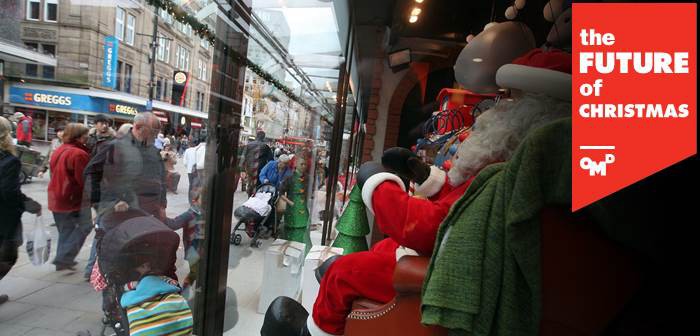From October 2014 to January 2015, the OMD UK Insight team has led the next stage of our pioneering Future of Britain research initiative, undertaking a mammoth study into the modern British Christmas culture.
Speaking to over 4,000 respondents through a combination of a weekly quantitative survey, five online communities and 75 mobile shopping tasks, we spent months analysing the sheer volume of data available to us and uncovered some surprising truths about the British Christmas mood and behaviour.
Over the next six months, we will be delivering the 12 Myths of Christmas to you via the medium of blog, examining the implications for brands wanting to get their fair share of the (mince) pie.
Today, Myth 1: Christmas shopping gets later every year.
FACT: The Christmas shopping period is stretched out from October to January.
We found that 3 in 5 Brits start their Christmas gift shopping before the end of October, with 1 in 10 starting during the summer months. 50% have bought most or all of their main gifts by the end of November, but (worryingly) 37% still have presents to buy in the week of Christmas itself.
What we need to bear in mind here is that we can’t neatly segment consumers into either early or late shoppers. Our findings suggest that the gift shopping cycle is long and extended – they can have ‘gifts’ on their mind for about three to four months before actual purchase. Different categories have different shopping lifecycles, and this is something we will explore further in a future myth.
Something we’ve found to be universally true is that kids come first.
Children are always first on the consumer radar when it comes to gift buying: over 80% of Brits think about buying or have already bought a gift for the kids by the end of October. This ties into the sentiment that much of the magic surrounding Christmas comes from the presence of children, and that disappointing them at Christmas would be tantamount to ruining the festive occasion. This is a recurring fear amongst the families in our sample – from parents to grandparents and beyond.
So what does this mean for brands?
The Christmas shopping cycle has been stretched, and brands need to be present and available for a longer period of time. Toy manufacturers and children’s’ retailers need to ensure that they get their products on the young consumers’ consideration list well in advance of the Autumn as these gifts will be the first to be bought.
Next time: Myth 2 – Black Friday is a new staple for Christmas gifting




